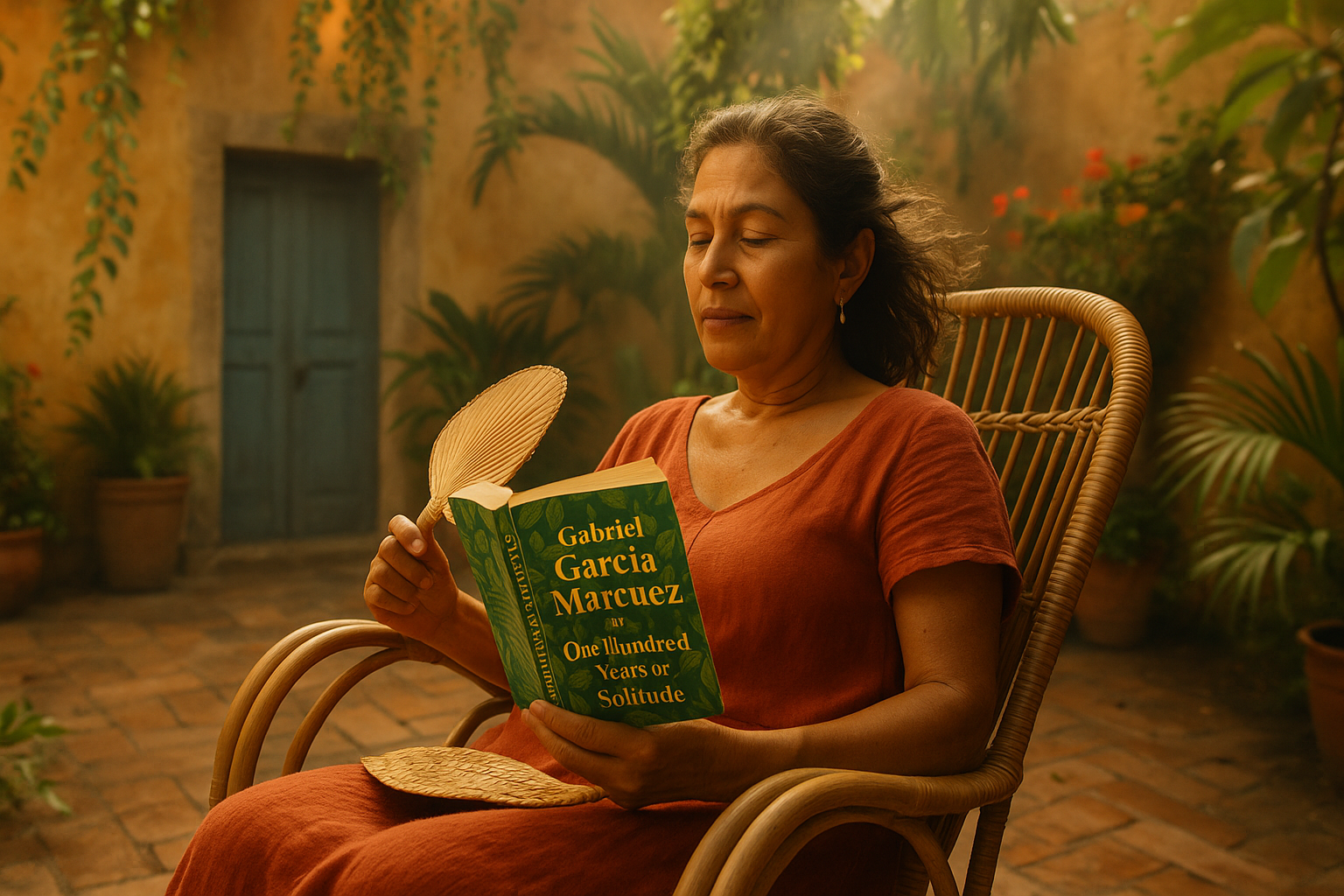A Pillar of Magical Realism
Discover Gabriel García Márquez’s “One Hundred Years of Solitude”, a captivating journey through magical realism that explores solitude, destiny and the richness of the human soul. An essential work of world literature that transforms the way we see reality.
“One Hundred Years of Solitude”, Gabriel García Márquez’s masterpiece published in 1967, is a cornerstone of magical realism and a profound exploration of solitude, destiny and the human condition. Through the story of the Buendía family in the fictional village of Macondo, García Márquez weaves an epic narrative that reflects the tumult of Latin America.
Summary and structure
The novel narrates the rise and fall of the Buendía family over seven generations, from the founding of Macondo by José Arcadio Buendía to his last descendants. The cyclical, repetitive structure of names and destinies underscores the themes of circular time and the inevitability of history. García Márquez blends reality and fantasy, creating a world where the marvelous blends with the everyday, reflecting the complexity of life and memory.
Themes and analysis
“One Hundred Years of Solitude” deals with solitude as a central theme, linked to fatality and the geographical and psychological isolation of Macondo and its inhabitants. The novel also explores Latin American history and politics, using Macondo as a microcosm to discuss colonialism, civil wars and exploitation. Magical realism is used to express the complex reality of this region, where the marvelous and the tragic exist side by side. García Márquez questions the nature of reality, memory, and the power of myths and legends in the construction of cultural and individual identity.

Characters and development
The members of the Buendía family are characterized by their intense desires, their quests for knowledge, and their tragic repetitions of destiny. José Arcadio Buendía, the patriarch, his obsession with alchemy and discovery, and his descent into madness illustrate the human quest for meaning and the blurred boundary between genius and madness. The female characters, notably Úrsula Iguarán, the family matriarch, provide a vital force, sustaining the family through the generations despite the fate that seems to pursue them.
Impact and reception
On publication, “One Hundred Years of Solitude” was acclaimed for its originality, thematic depth and innovative style. The novel was quickly recognized as a monument of world literature, contributing to García Márquez being awarded the Nobel Prize for Literature in 1982. Its influence is immense, not only in literature but also in the understanding of Latin American identity and its challenges.
Why read this book?
“One Hundred Years of Solitude” is a unique literary experience, offering a reflection on the cycles of history, the importance of memory, and the quest for identity. This novel is indispensable for those seeking to explore the possibilities of language and narrative, and to understand the heart and soul of Latin America. A work that defies time, rich in symbolism and metaphor, it continues to fascinate and inspire generations of readers.
Conclusion
“One Hundred Years of Solitude” is more than a novel; it’s an exploration of the human condition through the prism of magical realism. García Márquez offers us a vision of the world where fantasy reveals profound truths about reality, making Macondo and the Buendía family universal symbols of loneliness, love, destruction and redemption.
Latest Reviews & Analyses
Stay Updated with Our Latest Reviews
Join our community to receive exclusive insights and updates on groundbreaking literary works.
Find Your Next Literary Adventure
What Our Readers Are Saying

Sophia Lee
“A captivating collection of reviews that inspire and inform. Highly recommended for avid readers!”





